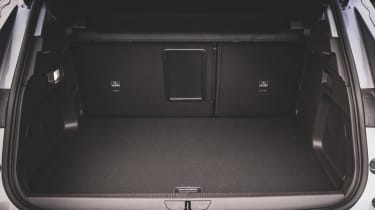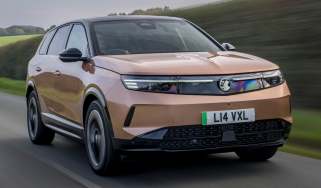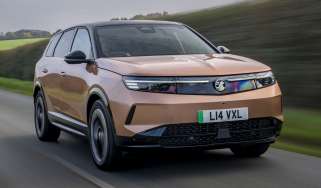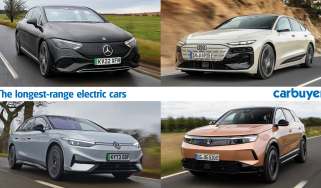Vauxhall Grandland (2017-2024) review - Practicality & boot space
Spacious, comfortable and with a big boot, the Vauxhall Grandland scores well in this area
As you might be able to tell by now, the Vauxhall Grandland is a thoroughly sensible car. Some rivals seem more glamorous, but once the showroom experience is over and you're making another trip to the dump or collecting someone from the train station, you may be glad you chose the Vauxhall.
Vauxhall Grandland interior space & storage
The Grandland gets a big green tick in this area. There are two generously sized cupholders next to the central armrest, a wireless charging spot for your phone in the central cubby (GS Line trim and up), a reasonable glovebox, decent door bins and an overwhelming sense of space. And while the front seats don't provide a considerable amount of lateral support, you're unlikely to notice this unless you're cornering hard.
Space in the rear is praiseworthy, with excellent leg and headroom. True, anyone in the middle seat will feel like they've drawn the short straw due to the compromised knee room brought about by the protruding centre console, but the Grandland's rear floor is nice and flat, which makes up for this slight shortcoming. Besides, many cars in the SUV class and beyond offer a middle rear seat that's best used by smaller children or for short trips. The Grandland has three ISOFIX points (its rivals from Ford and Hyundai have two), which makes it a more versatile family choice.
Boot space
At 514 litres, the Grandland's boot is roughly the size you should expect from the family SUV class. Dropping the rear seats reveals a large 1,652-litre load area, characterised by a flat floor.
The mechanically related Peugeot 3008 has a larger boot (590 litres) when the adjustable boot floor is in its lowest position but is almost identically sized in standard configuration. The Qashqai has a similarly sized boot, while the Hyundai Tucson manages up to 620 litres.
Opt for the plug-in hybrid Grandland and boot space shrinks to 395 litres, but this is mainly down to the lack of an underfloor compartment, so it shouldn't be a big problem day-to-day. Fold the back seats down and space increases to 1,528 litres. Still, the Tucson PHEV can manage 558 litres behind its rear seats, while the Ford Kuga Hybrid has up to 536 litres when its sliding rear bench is pushed forwards.
Towing
Perhaps surprisingly, the entry-level petrol engine has the highest towing weight of 1,400kg thanks to its manual gearbox. With an automatic transmission fitted, the same 1.2-litre petrol can haul 1,200kg or 100kg more when paired with the 1.5-litre diesel engine. This means owners of medium to large caravans or horseboxes will want to check if the Grandland is up to the required task before signing on the dotted line.
The Hyundai Tucson and Toyota RAV4 can tow up to 1,650kg, while a 2.0-litre TDI four-wheel-drive Volkswagen Tiguan can pull a more impressive 2,500kg.
Which Is Best?
Cheapest
- Name1.2 Hybrid 145 Design 5dr e-DCT6
- Gearbox typeAuto
- RRP£36,370
Most Economical
- Name1.2 Hybrid 145 Design 5dr e-DCT6
- Gearbox typeAuto
- RRP£36,370
Fastest
- Name1.2 Hybrid 145 Design 5dr e-DCT6
- Gearbox typeAuto
- RRP£36,370















